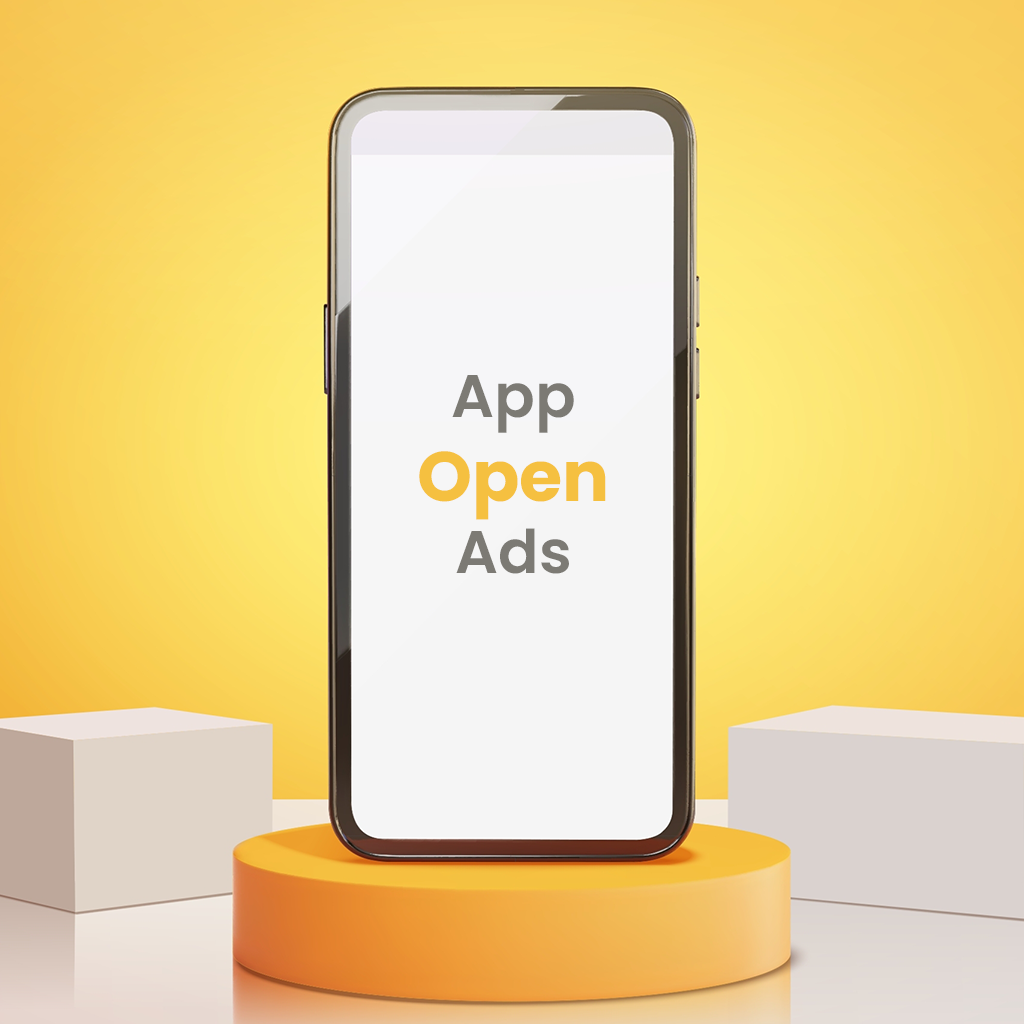
Strategies for Generating Revenue through ‘App Open Ads’
ThePubverse Team | June 29, 2024
In the competitive landscape of mobile app monetization, ‘App Open Ads’ have emerged as a powerful tool for developers to generate revenue while enhancing user experience. This article explores effective strategies for utilizing App Open Ads, including their integration into applications, how they are displayed to users, setup considerations, supported adapter versions for major ad networks, and best practices for optimal implementation.
How Can an App Open Ad Be Used Effectively in an Application?
App Open Ads are strategically displayed when a user opens an app, offering a non-intrusive yet impactful way to monetize. These ads typically appear during natural pauses in the app’s loading process, such as between screens or upon startup. Effectively integrating App Open Ads involves balancing revenue goals with user experience, ensuring ads are seamlessly integrated without disrupting app functionality or user engagement.
- Strategic Timing and Placement: App Open Ads should be timed to appear during natural breaks in the user flow, ensuring they do not interrupt critical app interactions. This strategic approach enhances user acceptance and engagement with the advertised content.
- Engaging Ad Formats: Utilize interactive and engaging ad formats such as videos, playable ads, or rich media creatives to capture user attention effectively. These formats not only enhance user interaction but also increase the likelihood of ad engagement and conversion.
- Personalization and Targeting: Implement user segmentation and targeting strategies to deliver relevant App Open Ads based on user behavior, preferences, and demographics. Personalized ads improve relevance and user satisfaction, leading to higher ad engagement and revenue potential.
How Are App Open Ads Shown to the Users?
App Open Ads are shown in a manner that minimizes disruption to the user experience. They are strategically timed to appear during app launch or transitions, ensuring they do not interfere with critical user interactions. Ad placements are designed to be unobtrusive yet noticeable, allowing users to engage with the ad or dismiss it easily while they navigate through the app’s interface.
- Non-Intrusive Integration: Integrate App Open Ads seamlessly into the app’s interface to maintain a cohesive user experience. Ads should complement the app’s design aesthetic and functionality without causing friction or distraction.
- User-Friendly Interaction: Provide clear and intuitive controls for users to interact with App Open Ads, such as easy dismissal options or engaging calls-to-action that encourage further exploration.
- Contextual Relevance: Display ads that are contextually relevant to the app’s content or user activity to enhance user interest and engagement. Contextual relevance increases the likelihood of ad interaction and conversion, benefiting both users and advertisers.
Setup for App Open Ads
Setting up App Open Ads involves integrating the ad network’s SDK into the app and configuring ad placements within the app’s code. Developers need to define when and where App Open Ads will be displayed, ensuring compliance with ad network policies and guidelines. Proper implementation includes testing ad placements across different devices and user scenarios to optimize performance and user satisfaction.
- SDK Integration Best Practices: Follow ad network guidelines and best practices for integrating the latest SDK versions into the app. This ensures compatibility, stability, and access to advanced ad features offered by the network.
- Ad Placement Optimization: Experiment with different ad placement strategies to identify optimal positions that maximize visibility and user engagement. A/B testing can help determine which placements yield the best results in terms of ad performance and revenue generation.
- Performance Monitoring and Optimization: Continuously monitor key performance indicators (KPIs) such as ad fill rates, click-through rates (CTR), and revenue earned per user session. Use data-driven insights to make informed decisions and optimize ad placements for maximum revenue impact.
Also read: Enhancing Ad Engagement and Revenue for Publishers Through In-App Advertising
Supported Adapter Versions for Various Ad Networks
To maximize revenue potential, developers should ensure compatibility with the latest adapter versions for popular ad networks:
- Google Bidding: Ensure compatibility with Google’s latest bidding adapter version to participate in real-time auctions for ad placements.
- Google AdMob: Utilize the recommended adapter version to seamlessly integrate AdMob’s App Open Ads and maximize fill rates.
- Mintegral: Stay updated with Mintegral’s adapter version to leverage their rewarded and native ad formats effectively.
- Pangle (formerly known as TikTok Ads): Integrate the compatible adapter version to access Pangle’s diverse ad inventory and engage global audiences.
- Vungle: Optimize revenue streams by integrating Vungle’s adapter version for high-quality video and display ads that align with user preferences.
Best Practices Recommended for Using App Open Ads
Implementing App Open Ads effectively requires adhering to best practices that enhance both revenue generation and user satisfaction:
- Strategic Placement: Display App Open Ads during natural app pauses to avoid disrupting the user experience. Ensure ads appear when users are most receptive, such as during initial app launch or between content transitions.
- Clear Call-to-Action: Ensure ads include clear and compelling calls-to-action that encourage user engagement, such as downloading an app, visiting a website, or engaging with interactive content.
- Frequency Capping: Implement frequency capping to control how often users see App Open Ads, preventing ad fatigue and maintaining a positive user experience.
- A/B Testing: Experiment with different ad formats, placements, and frequencies to optimize performance and revenue. Test variations to identify which configurations yield the best results in terms of user engagement and revenue generation.
- User Consent and Transparency: Comply with data privacy regulations and provide clear opt-out options for users who prefer an ad-free experience. Transparency builds trust and enhances user satisfaction with the app’s advertising practices.
- Performance Monitoring: Regularly monitor ad performance metrics such as click-through rates, fill rates, and revenue generated per user session. Analyze data to identify trends, optimize ad placements, and make informed decisions that maximize revenue potential.
Also read: Unlocking Revenue Growth in 2024 with Brilliant Programmatic Monetization Strategies
Leveraging App Open Ads effectively can significantly enhance revenue streams for app developers while maintaining a positive user experience. By understanding the setup process, supported adapter versions for major ad networks, and implementing best practices, developers can maximize ad revenue potential and ensure sustainable monetization strategies in the competitive mobile app market.




